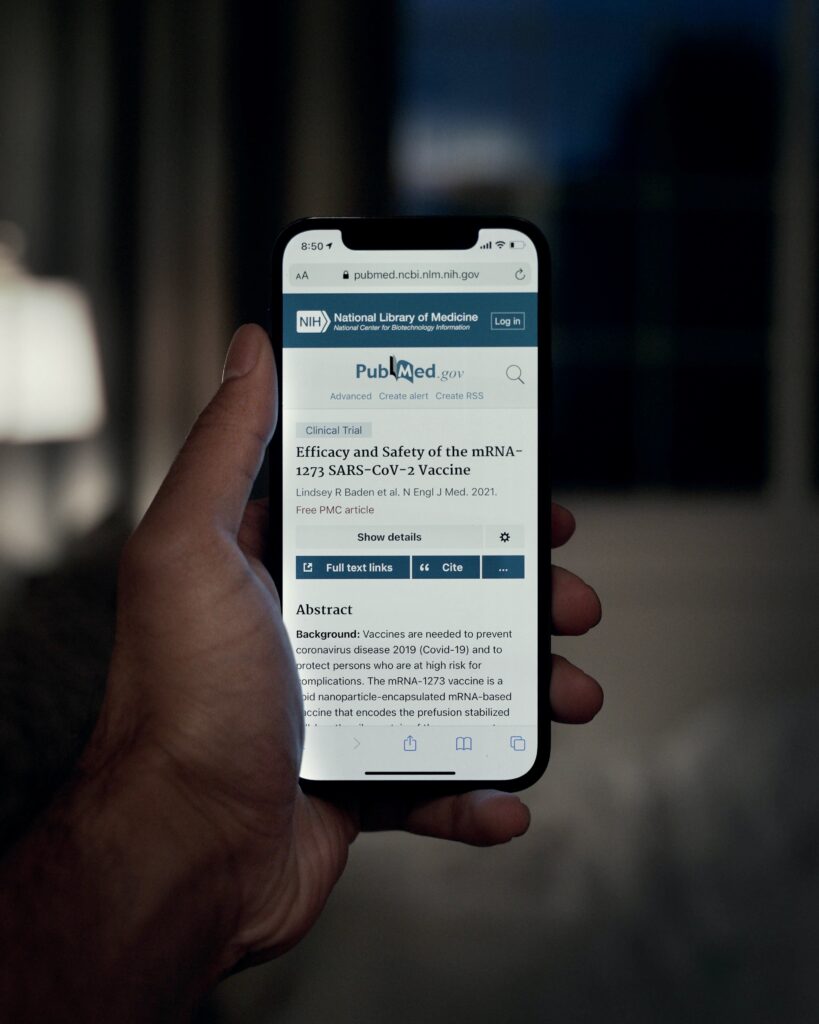Encouraging Critical Thinking: Activities To Foster Analytical Skills In Adolescents
In today’s fast-paced and increasingly complex world, it is more important than ever for adolescents to develop critical thinking skills. By honing their ability to analyze information and think critically, adolescents can navigate challenges and make informed decisions. This article presents a range of engaging activities that can foster analytical skills in adolescents, providing them with the tools they need to become independent and insightful thinkers. From puzzles and riddles to debates and problem-solving tasks, these activities are designed to encourage curiosity, reasoning, and an open-minded approach to learning. With these stimulating activities, adolescents can enhance their critical thinking abilities while having fun along the way.
1. Introduction to Critical Thinking
Understanding critical thinking
Critical thinking is a valuable skill that allows individuals to approach problems and challenges in a thoughtful and systematic way. It involves the ability to analyze, evaluate, and make reasoned judgments based on evidence and logical reasoning. By engaging in critical thinking, individuals can develop a deeper understanding of complex issues, make informed decisions, and solve problems effectively. It is a skill that is highly sought after in various aspects of life, including education, the workplace, and personal decision-making.
Importance of critical thinking in adolescents
Adolescence is a critical period of growth and development where young individuals are forming their identities and learning to navigate the complexities of the world around them. Developing strong critical thinking skills during this time is crucial, as it equips adolescents with the tools they need to become independent thinkers, make informed decisions, and become active participants in society. Critical thinking enables adolescents to question assumptions, evaluate different perspectives, and consider the consequences of their actions. It empowers them to think critically about the information they encounter, to distinguish between reliable and unreliable sources, and to develop their own perspectives based on evidence and reasoning.
2. Developing Analytical Skills
Defining analytical skills
Analytical skills are essential components of critical thinking. They involve the ability to break down complex problems or situations into smaller parts, examine the relationships between these parts, and identify patterns or connections. Analytical skills require individuals to think logically, analyze information objectively, and draw meaningful conclusions. Developing analytical skills helps adolescents become more effective problem solvers and empowers them to approach challenges with a systematic and logical mindset.
The role of analytical skills in critical thinking
Analytical skills play a crucial role in critical thinking by enabling individuals to gather, process, and evaluate information effectively. These skills help individuals identify biases, evaluate the credibility of sources, and determine the reliability of information. Analytical thinking also allows individuals to recognize logical fallacies and distinguish between valid and invalid arguments. By developing strong analytical skills, adolescents can become more efficient and accurate in their critical thinking process, enabling them to make well-informed decisions and solve complex problems.

3. Classroom Activities for Critical Thinking
Socratic questioning
Socratic questioning is a powerful teaching technique that stimulates critical thinking through a series of thought-provoking questions. In this activity, teachers facilitate discussions by asking open-ended questions that encourage students to analyze their own thinking, explore different perspectives, and provide evidence to support their claims. By engaging in Socratic questioning, adolescents learn to think deeply, articulate their thoughts clearly, and consider alternative viewpoints.
Debate and argumentation
Debate and argumentation activities require students to research and present arguments on various topics, encouraging them to develop their critical thinking and communication skills. These activities provide opportunities for adolescents to analyze different perspectives, construct logical arguments, and evaluate evidence. Debates foster analytical thinking, as students need to consider counterarguments, defend their claims with evidence, and critically evaluate the strengths and weaknesses of opposing viewpoints.
Case studies
Case studies provide real-life scenarios or examples that require students to apply critical thinking skills to analyze and solve problems. Through examining cases that are relevant to their lives or specific subject areas, adolescents learn to identify key issues, consider multiple perspectives, and propose practical solutions. Case studies encourage critical thinking by promoting analysis, problem-solving, and decision-making skills.
Brainstorming
Brainstorming activities encourage adolescents to think creatively and generate a wide range of ideas or solutions to a problem. By engaging in brainstorming sessions, students learn to think outside the box, consider different possibilities, and challenge conventional thinking. Brainstorming promotes critical thinking by fostering flexibility, originality, and adaptability.
Role-playing
Role-playing activities involve students acting out scenarios or assuming different roles to explore various perspectives and consider different viewpoints. By putting themselves in someone else’s shoes, adolescents develop empathy and gain a deeper understanding of complex issues. Role-playing encourages critical thinking by requiring students to analyze situations from multiple perspectives, evaluate the consequences of different actions, and make informed decisions.
4. Real-World Applications
Problem-solving challenges
Engaging adolescents in real-world problem-solving challenges allows them to apply their critical thinking skills to practical situations. These challenges can be based on real-life issues or simulated scenarios that require students to analyze information, evaluate options, and propose viable solutions. By tackling problem-solving challenges, adolescents learn to think critically, collaborate with others, and develop innovative solutions.
Evaluating news sources
In today’s digital age, it is essential for adolescents to develop the ability to evaluate the credibility and reliability of news sources. Teachers can provide students with different news articles and guide them through the process of critically analyzing the information, identifying biases, and verifying facts. By evaluating news sources, adolescents learn to think critically about the information they consume, distinguish between reliable and unreliable sources, and make well-informed judgments.
Analyzing advertisements
Advertisements are prevalent in today’s society, and adolescents are often exposed to various marketing tactics. By analyzing advertisements, students can develop their critical thinking skills by examining the strategies used, identifying persuasive techniques, and evaluating the intended messages. This activity encourages adolescents to question the motives behind the advertisements, consider different interpretations, and think critically about the impact of marketing on their decision-making.
Ethical dilemmas
Ethical dilemmas provide opportunities for adolescents to engage in critical thinking and examine the ethical implications of different choices. Teachers can present students with hypothetical scenarios that involve conflicting values or moral choices and guide them through a process of analyzing the consequences, evaluating different perspectives, and making ethical judgments. By grappling with ethical dilemmas, adolescents learn to think critically about complex moral issues and develop their own ethical frameworks.
Decision-making scenarios
Engaging in decision-making scenarios allows adolescents to practice critical thinking skills by weighing different options, considering the consequences, and evaluating the pros and cons of each choice. Teachers can provide students with various decision-making scenarios that are relevant to their lives or specific subjects, encouraging them to analyze the factors influencing their decisions and think critically about the potential outcomes. Decision-making scenarios promote critical thinking by fostering analysis, evaluation, and reflection.

5. Incorporating Technology
Online simulations and games
Using online simulations and educational games can be an effective way to engage adolescents in critical thinking activities. These interactive tools provide opportunities for students to explore different scenarios, solve problems, and make decisions in a virtual environment. Through online simulations and games, adolescents can develop their critical thinking skills while having fun and experiencing hands-on learning.
Virtual reality experiences
Virtual reality (VR) technology can create immersive experiences that allow adolescents to engage in critical thinking activities in a highly interactive and realistic manner. VR experiences can simulate real-world situations, challenges, or environments, providing students with opportunities to analyze, problem-solve, and make decisions in a three-dimensional space. By incorporating virtual reality, educators can enhance critical thinking by providing an immersive and engaging learning environment.
Video analysis and interpretation
Using videos as a teaching tool enables adolescents to analyze and interpret visual information, enhancing their critical thinking skills. Teachers can provide students with videos that present complex topics, prompt thought-provoking questions, and stimulate discussion. Through video analysis and interpretation, students develop their ability to observe details, analyze visual cues, and draw logical conclusions.
Internet research and fact-checking
The internet provides a vast amount of information, but it is crucial for adolescents to develop the skills to critically evaluate and fact-check the information they find. Teachers can guide students in conducting online research, teaching them how to assess the credibility and reliability of sources, verify facts, and cross-check information. Internet research and fact-checking activities empower adolescents to think critically about the information they encounter online and develop a discerning mindset.
6. Collaborative Learning Approaches
Group discussions and debates
Encouraging group discussions and debates allows adolescents to engage in collaborative learning and develop their critical thinking skills by exchanging ideas, challenging assumptions, and analyzing different perspectives. By discussing complex topics, students learn to listen actively, articulate their thoughts, and consider alternative viewpoints. Group discussions and debates promote critical thinking by fostering communication, analytical thinking, and the ability to evaluate and construct arguments.
Peer feedback and critique
Incorporating peer feedback and critique activities enables adolescents to receive constructive criticism and learn from their peers’ perspectives. By providing and receiving feedback, students develop their ability to think critically about their own work, evaluate the strengths and weaknesses of their arguments, and revise and improve their ideas. Peer feedback and critique promote critical thinking by encouraging students to reflect on their own thinking and consider alternative viewpoints.
Cognitive apprenticeships
Cognitive apprenticeships involve providing adolescents with opportunities to work alongside experts in a particular field to develop their critical thinking skills. Through observing and participating in authentic real-world tasks, such as scientific experiments or artistic creations, adolescents learn to think critically by engaging in the problem-solving processes of experts. Cognitive apprenticeships promote critical thinking by providing students with models of expert thinking, hands-on experiences, and opportunities for reflection and discussion.
Project-based learning
Engaging adolescents in project-based learning allows them to apply their critical thinking skills to real-world challenges. By working on long-term projects that require research, analysis, and problem-solving, students learn to think critically and develop a deeper understanding of the subject matter. Project-based learning promotes critical thinking by providing students with opportunities for inquiry, collaboration, and the application of knowledge in real-life contexts.

7. Reflective Thinking Strategies
Journaling and writing reflections
Encouraging adolescents to engage in journaling and writing reflections can enhance their critical thinking skills by promoting self-reflection, analysis, and synthesis of ideas. By documenting their thoughts, observations, and insights, students develop their ability to think critically about their own thinking and articulate their ideas coherently. Journaling and writing reflections foster metacognition and promote a deeper understanding of complex concepts.
Self-assessment and self-reflection
Incorporating self-assessment and self-reflection activities allows adolescents to evaluate their own thinking processes, identify areas for improvement, and set goals for growth. By engaging in self-assessment, students learn to think critically about their own strengths and weaknesses, make judgments about the quality of their work, and take ownership of their learning. Self-assessment and self-reflection promote critical thinking by encouraging students to evaluate their own thinking and develop strategies for improvement.
Metacognition development
Metacognition refers to the awareness and understanding of one’s own thinking processes. By explicitly teaching metacognitive strategies, educators can help adolescents develop their critical thinking skills by enabling them to monitor, evaluate, and regulate their own thinking. Metacognition development activities may include teaching students how to set goals, plan their thinking process, monitor their progress, and reflect on their learning. Developing metacognition enhances critical thinking by fostering self-awareness, reflection, and the ability to make adjustments based on feedback.
8. Cross-Curricular Integration
Critical thinking in English language arts
Integrating critical thinking into English language arts instruction enables adolescents to engage in close reading, analysis of literary texts, and interpretation of complex language. By examining texts critically, students learn to identify central themes, analyze characters and their motivations, and interpret figurative language. Critical thinking in English language arts promotes deeper understanding, encourages reflection, and enhances communication and expression skills.
Mathematics and logical reasoning
Mathematics provides an ideal context for developing critical thinking skills through logical reasoning and problem-solving. By engaging in mathematical tasks that require analysis, evaluation, and the application of mathematical concepts, adolescents learn to think critically and develop analytical skills. Mathematical reasoning activities encourage students to analyze patterns, identify relationships, and develop logical arguments. Critical thinking in mathematics enables students to approach problems with a systematic and logical mindset.
Scientific inquiry and analysis
Scientific inquiry and analysis involve critical thinking skills such as observation, data analysis, and hypothesis testing. By engaging in scientific experiments, adolescents learn to think critically, analyze data, evaluate evidence, and draw logical conclusions. Science activities that encourage questioning, experimentation, and critical analysis develop students’ ability to think scientifically and make informed judgments based on evidence.
Social studies and historical thinking
Critical thinking is essential in social studies and historical thinking, as it involves analyzing primary and secondary sources, interpreting historical events, and understanding diverse perspectives. By engaging in historical investigations, adolescents learn to think critically about the causes and consequences of historical events, evaluate evidence from different sources, and construct well-reasoned arguments. Social studies and historical thinking activities foster critical thinking by promoting inquiry, analysis, and the ability to think historically.
Art and creative problem-solving
Art provides a platform for creative problem-solving and critical thinking. By engaging in artistic activities, adolescents learn to think creatively, experiment with different techniques and materials, and articulate their thoughts and emotions. Art activities foster critical thinking by encouraging students to evaluate, interpret, and reflect on their own artistic creations and those of others. Artistic expression promotes open-ended thinking, innovative approaches, and the development of unique perspectives.
9. Teacher Support and Guidance
Creating a supportive classroom environment
Teachers play a crucial role in fostering critical thinking by creating a supportive classroom environment that encourages inquiry, exploration, and risk-taking. By establishing a safe and inclusive space where students feel comfortable asking questions, sharing their opinions, and challenging assumptions, teachers promote critical thinking. Creating a supportive classroom environment involves fostering open communication, respecting diverse perspectives, and valuing students’ contributions.
Providing feedback and constructive criticism
Effective feedback and constructive criticism are essential in developing critical thinking skills. By providing timely and specific feedback, teachers help adolescents evaluate the strengths and weaknesses of their thinking processes and make improvements. Constructive criticism fosters self-reflection, encourages students to engage in metacognition, and promotes the development of critical thinking skills. Teachers should provide constructive feedback that focuses on the students’ thinking process rather than solely on the final outcome.
Teacher modeling and demonstrating critical thinking
Teachers can model and demonstrate critical thinking by thinking aloud, sharing their own decision-making processes, and explicitly explaining their reasoning. By showcasing their own critical thinking skills, teachers provide adolescents with real-life examples and inspire them to develop their own critical thinking abilities. Teacher modeling and demonstration involve explicitly discussing the steps taken in analyzing information, evaluating evidence, and making informed judgments.
Professional development opportunities
To effectively foster critical thinking in adolescents, teachers themselves need to continuously develop their own understanding and skills in critical thinking instruction. Offering professional development opportunities focused on critical thinking allows educators to learn new strategies, exchange ideas with colleagues, and enhance their instructional practices. Professional development opportunities can include workshops, conferences, online courses, and collaborations with other educators.
10. Assessing Critical Thinking Skills
Designing authentic assessments
Authentic assessments are assessment tasks that mirror real-life situations and require students to apply their critical thinking skills. Designing authentic assessments involves creating tasks that incorporate analysis, evaluation, and synthesis of information in a meaningful context. Authentic assessments may include projects, presentations, research papers, or performance-based tasks that require students to think critically and demonstrate their understanding.
Rubrics for evaluating critical thinking
Rubrics provide a clear and structured way to evaluate critical thinking skills by outlining specific criteria and performance levels. By using rubrics, teachers can assess students’ critical thinking abilities based on observable behaviors and evidence. Rubrics should include criteria that reflect the key components of critical thinking, such as analyzing information, evaluating evidence, constructing arguments, and making reasoned judgments.
Observation and feedback
Observation and providing feedback in real-time allow teachers to assess students’ critical thinking skills as they engage in classroom activities. By observing students’ participation, listening to their ideas, and asking probing questions, teachers can gain insights into their critical thinking processes and provide immediate feedback. Observation and feedback promote reflection, guide students’ thinking, and inform instructional practices.
Standardized test alternatives
Standardized tests often focus on memorization and recall of information rather than critical thinking skills. To assess critical thinking in adolescents, alternative assessment methods can be used. Performance-based assessments, open-ended questions, and authentic tasks provide opportunities for students to demonstrate their critical thinking abilities. Using alternative assessment methods allows educators to evaluate critical thinking skills in a more comprehensive and meaningful way.




